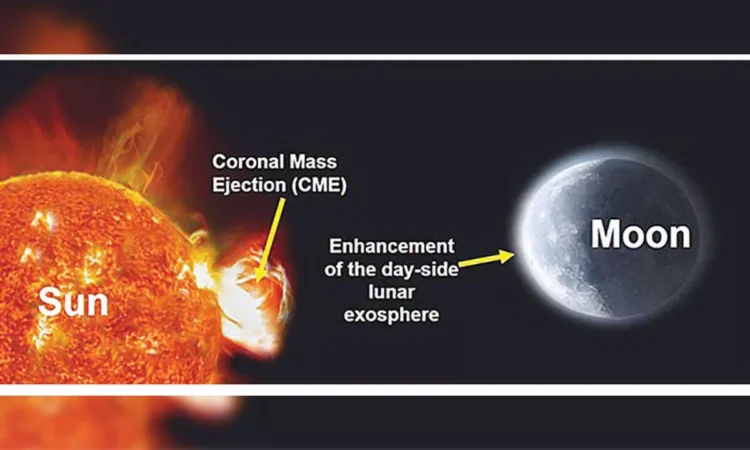Bengaluru: In a significant scientific achievement, the Indian Space Research Organisation (ISRO) announced that its lunar orbiter, Chandrayaan-2, has made the first observation of the effects of Coronal Mass Ejections (CMEs) from the Sun on the Moon using its onboard scientific instrument. The Bengaluru-based space agency stated that this observation will enhance understanding of the lunar exosphere, the Moon’s thin atmosphere, and how space weather influences its surface. Launched on July 22, 2019, from Sriharikota with the GSLV-MkIII-M1 rocket, Chandrayaan-2 carried eight experimental payloads. On August 20, 2019, it was successfully placed into an elliptical orbit around the Moon.
While communication was lost with the Vikram lander during its landing attempt on September 7, 2019, the orbiter remains fully operational, functioning in a 100 km x 100 km orbit around the Moon. In a statement, ISRO highlighted that one of the payloads, Chandra’s Atmospheric Compositional Explorer 2 (CHACE 2), recorded the impacts of CMEs from the Sun on the lunar exosphere. The primary goal of the CHACE-2 payload is to analyze the composition and distribution of the lunar neutral exosphere and its changes. During a rare solar event on May 10, 2024, several CMEs affected the Moon, resulting in a substantial increase in the total pressure of the dayside lunar exosphere.
ISRO scientists reported that the number density of neutral atoms and molecules in the exosphere rose by more than an order of magnitude, validating theoretical predictions that had not been confirmed through direct observation. The Moon’s exosphere, classified as a surface boundary exosphere, is particularly responsive to solar activity because of the lack of a global magnetic field. The CME event increased the release of atoms from the lunar surface, temporarily modifying the Moon’s atmospheric conditions. ISRO noted that these findings not only enrich scientific knowledge of lunar space weather but also have implications for future lunar missions and the design of human habitats on the Moon.


